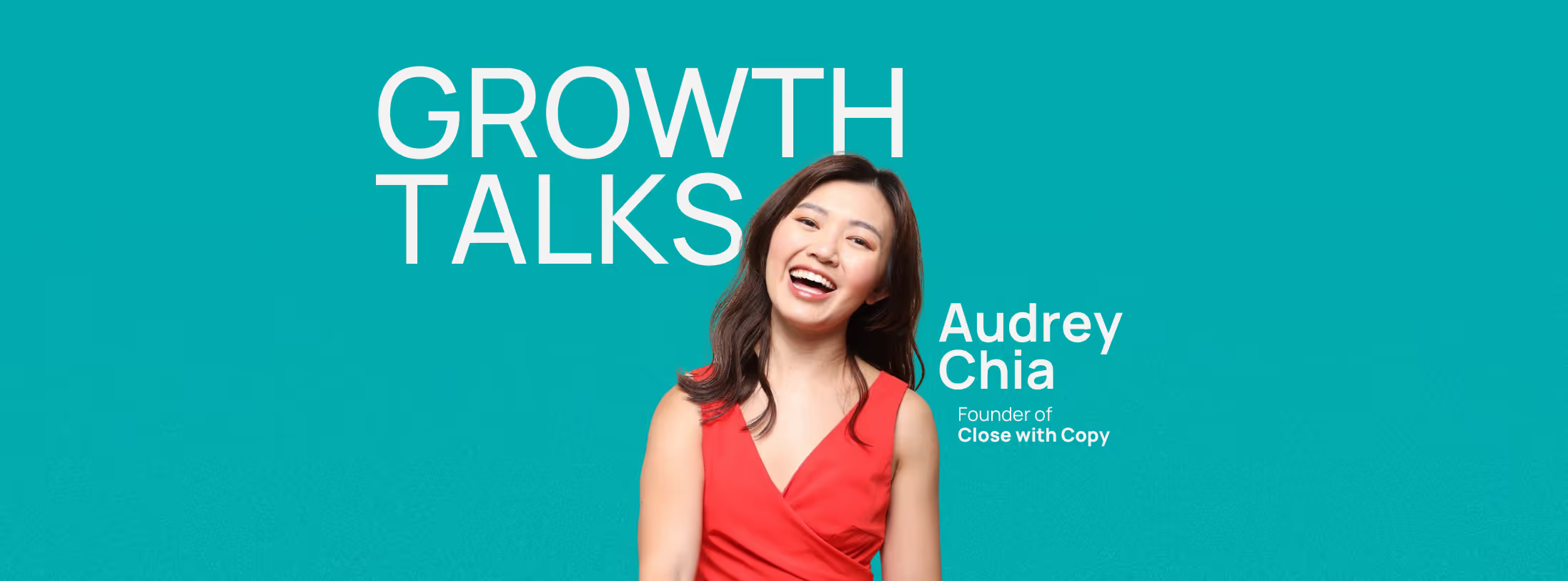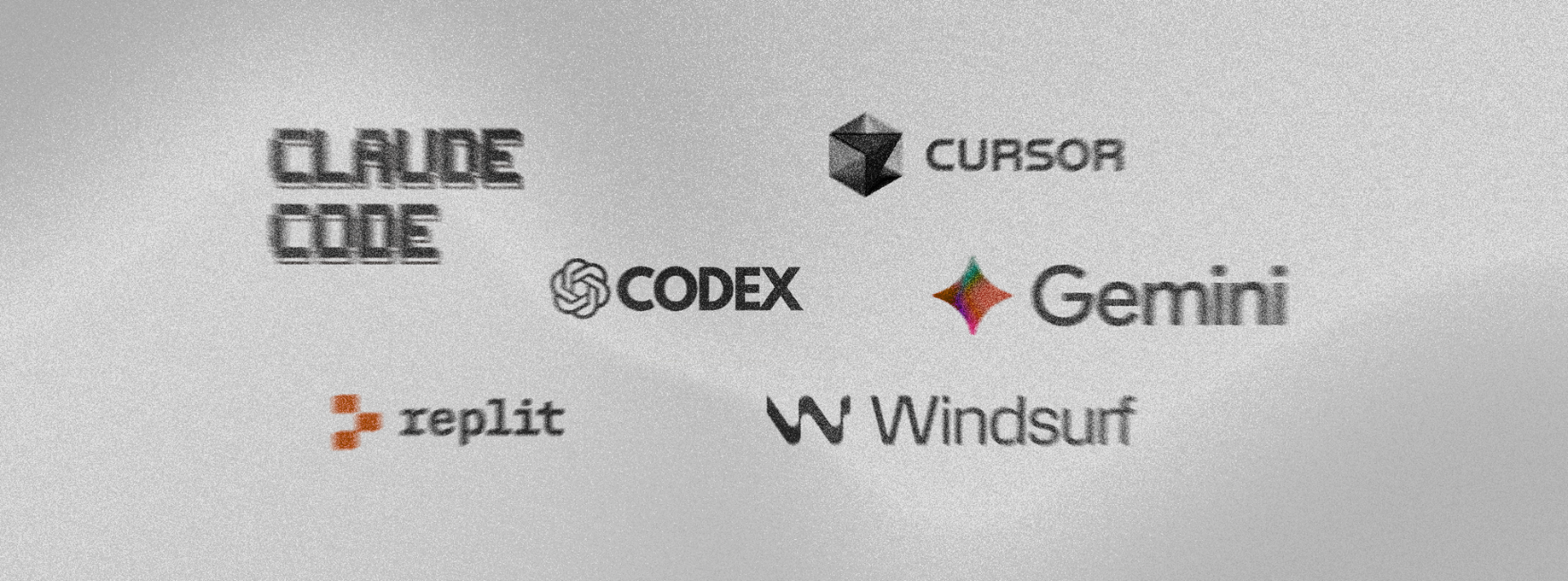Welcome to another Growth Talk! Today, we're joined by Audrey Chia, a master at combining copywriting, AI, and strategy to help businesses grow smarter.
Audrey is the founder of Close with Copy, a consultancy that helps businesses grow through effective copywriting, personal branding, and smart use of AI. She works with a small number of clients, creating landing pages, email funnels, and sales copy that deliver clear results. She also supports founders in building strong personal brands, leveraging organic content to increase visibility and trust.
Beyond her client work, Audrey is an active content creator on LinkedIn, where she shares practical tips on AI tools, copywriting, and content strategy. If you're curious about using AI to save time and grow smarter, she's definitely someone to follow.
In this talk, we'll hear about Audrey's journey, her work with brands, and her advice for staying ahead!
Starting simple, what does growth mean to you?
Growth, to me, is a state of being. I've embodied the growth mindset for a huge part of my life. Many challenges I've faced were actually stepping stones that built my character today. But growth isn't passive it's an active choice. It requires:
- The power of perspective - Seeing beyond your circumstances to evaluate things differently.
- The power of reframing - Shifting your lens to gain a new understanding.
- The power of choice - Taking ownership of your future and intentionally building the life you want.
Growth is about leveraging mindset and faith to progress in life.
Can you share the story of how you got started in copywriting and AI? What drew you to this unique combination of skills?
I started as a copywriter at an ad agency, but my dream began at 13 when I saw a TV ad and said, "I'm going to be an award-winning creative director." That vision led me to one of the top agencies in Singapore, where I learned the craft. But I quickly realized brand copywriting was just one part of the puzzle what about businesses that couldn't afford big agency budgets but still needed high-converting copy?
So, I taught myself conversion copywriting books, videos, hands-on work and even started with a $5 gig on Fiverr, spending two weeks perfecting it. That journey shaped me into a Swiss Army knife of marketing skills from brand copy to growth marketing, funnels, and personal branding.
Then came AI. Just as I launched Close With Copy, ChatGPT dropped. A client told me, "You're going to be replaced by AI." That was a wake-up call. Instead of resisting, I embraced AI, leveraging it to enhance my work rather than compete with it.
Starting Close with Copy must have been a big step. What was the journey from the initial idea to turning it into a successful business, and what surprised you most along the way?
I didn't dive in blind. I built a portfolio while working a full-time job, hustling on nights and weekends to sharpen my skills. When I launched, I had proof I knew how to pitch, close, and deliver results.
The biggest surprise? Losing the mental safety net of a steady paycheck. Beyond financial uncertainty, entrepreneurship demands emotional and mindset resilience. You have to control your thoughts, reframe failures as lessons, and stay committed even when things get tough.
Why do you choose to work with only 3-5 clients at a time, and how does that approach benefit both you and your clients?
Because depth > volume. I don't just write I optimize, strategize, and refine.Working with more than 5 clients dilutes my impact. My criteria for clients:
- I love working with them.
- I can make a real impact.
- I bring unique value.
This also ensures my clients get a fractional lead who has their best interests at heart.
What's your typical workday like? How do you balance client work, content creation, and staying up-to-date with industry trends?
My brain operates like a filing cabinet each client has a drawer, each task has a slot. I compartmentalize deeply, switching skills as needed. My day involves:
- Mornings: Deep strategy and writing work.
- Afternoons: Meetings, client reviews, AI-driven optimization.
- Evenings: Industry research, content creation, and podcasts.
Balance? It's about doing what matters. I prioritize impact-driven tasks and make intentional time to switch off and recharge.
Do you specialize in any particular industry or type of business? How does that influence your approach to copy and AI?
I focus on startups and scale-ups because they need strategic positioning and conversion copywriting the most. These businesses move fast and need to maximize impact, which is why they're also early AI adopters.
You write a lot about AI. So, what are your thoughts on Human creativity vs. AI? Where do you draw the line between what AI can do and what should still be done by humans?
AI is a tool, not a replacement. It's amazing for speed, pattern recognition, and data-driven content, but human creativity is irreplaceable for emotion, nuance, and brand storytelling.
Example:
- Nike commercial? Needs human storytelling emotion, rawness, authenticity.
- Facebook ad? AI can analyze trends, optimize performance, and generate variations.
Creativity exists on a spectrum, and AI's role depends on the task at hand.
What's one AI tool you can't live without, and how does it help with your work?
An AI notetaker/transcriber. As a copywriter, nuance matters. AI lets me capture conversations, extract insights, and analyze bulk transcripts at scale, streamlining my research and content creation process.
What's the most common mistake businesses make when it comes to content strategy, and how do you help them avoid it?
Talking about themselves instead of their audience.
People don't care about your features they care about how you solve their problems. Shift from:
- "Look at our 10 new features!" ? To ? "Here's how we solve your biggest pain points."
Engage first, then introduce your product. That's how you get results.
You've mentioned saving time and increasing ROI with bespoke AI systems. Can you explain how this works in simple terms?
AI can cut repetitive work by 50-70%. It's like having a co-pilot. Examples:
- Cold email outreach? AI personalizes and scales it.
- Sales mailers? AI replicates your brand voice and psychological triggers.
- Content workflows? AI drafts, optimizes, and refines content at scale.
AI gets you 70-80% of the way, but human oversight is the final 20% that makes it resonate.
Can you share a story where something didn't go as planned, and what you learned from that experience?
Failures happen 90% of the time entrepreneurship is about navigating them.
Example: I invested in a sales coach to launch webinars. Spent 5 weeks prepping slides, emails, execution. Only 1 conversion. Huge lesson:
- Just because a framework works for one person doesn't mean it will work for you.
- Success is about iterating, experimenting, and staying agile.
The key is to move forward while learning from the past.
And the last one. What's one fun fact about you that most people don't know?
I taught my mom how to use ChatGPT. Now, she's the top AI power user in her company and training her team on AI workflows. She had zero tech backgroundbut now she's leading AI adoption. That's the power of learning and adaptability.







.svg)